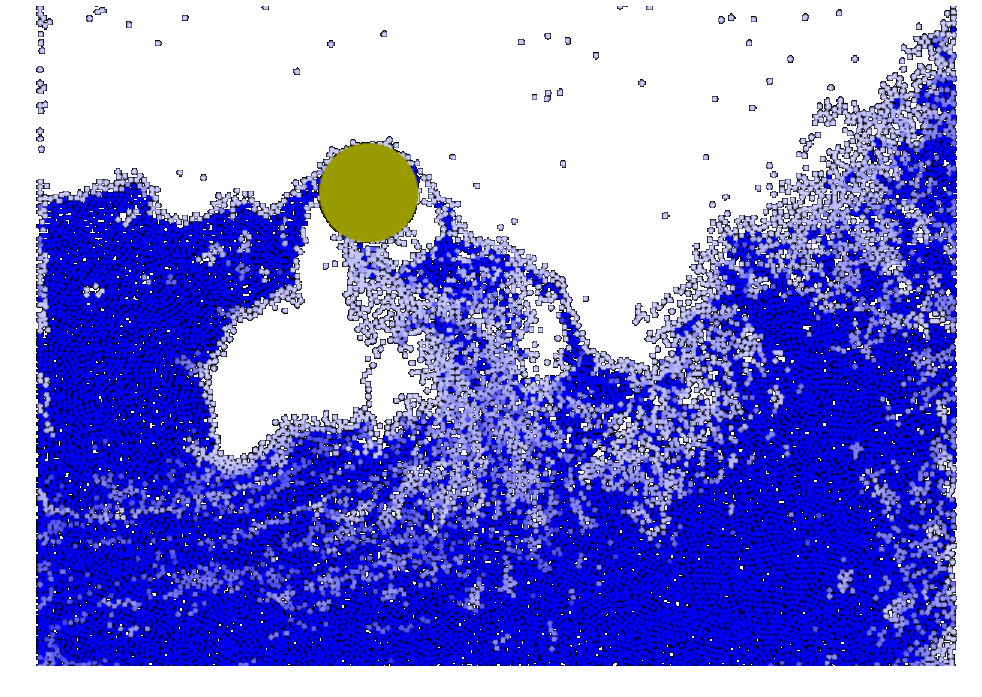Interactive three-dimensional simulations & visualizations
Visualizing the beauty in physics and mathematics
Project maintained by zhendrikse Hosted on GitHub Pages — Theme by mattgraham
Smoothed Particle Hydrodynamics (SPH)
A more sophisticated simulation in pure Javascript
Matthias Müller wrote a more sophisticated fluid simulation that is implemented using a so-called grid-based or Eulerian approach. He personally elaborates on this simulation in this video on his Ten Minute Physics YouTube channel.

Smoothed Particle Hydrodynamics explained
Smoothed Particle Hydrodynamics (SPH) was originally designed for astrophysical simulation some decades ago, but is finding a place more and more for simulations of things like water. It is a way of modeling fluids by representing a fluid by a collection of particles. Subsequently, we can compute the forces on each particle. SPH is widely used in gaming platforms such as Algodoo.
If we were to choose a grid-based approach (also termed “Eulerian approach”), we would have to have a grid with some particular size and could only have fluid inside that grid. With the particle-based approach (termed a “Lagrangian approach”) adopted by SPH, we don’t have to worry about a grid in order to calculate our forces (this isn’t completely true though, as we will see with some performance considerations later).
Also, the convection term from the previous section is completely absent in this approach because all the information about the fluid is stored in the particles themselves and moves when the particles move. This means a little less computation for us. The only big downside to SPH is that without a correction (which isn’t going to be done here because the results are still fine for a basic implementation), the compressibility constraint we wanted to satisfy isn’t exactly going to be honored. The fluid will compress and decompress sometimes. SPH works by a method of weighting forces between two adjacent particles based on a non-linear weighting kernel which ends up being a radial basis function of distance between particles.
All of this said, the above, basic SPH system is much simpler, easier to understand, and gives pretty good results. It also contains many implicit/possible extension points.
We are going to compute a few quantities for every particle, and then use these data to derive the forces. The radius of support for the weights is used makes sure that all particles outside this radius of support have no contribution.
Share on: